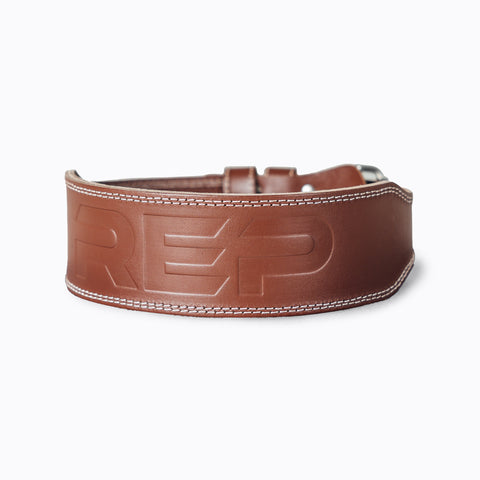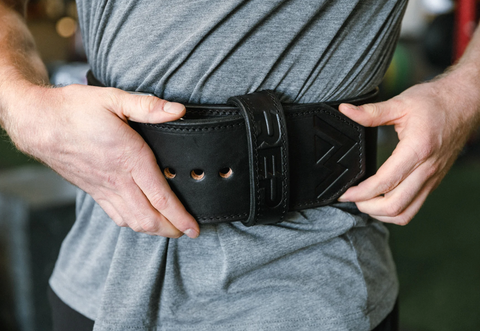
Picture a soda can. When that can is empty, it’s easy to step on it and crush it. Now try to crush an unopened can.
The material of the can hasn’t changed. What changed was the internal pressure of the can.
The next time you’ve got a heavy barbell loaded on your spine, think about the full soda can and embody it. That’s the difference between lifting when you’re properly bracing and when you’re not.
Why Brace While Lifting Weights?

Proper bracing (which many people think of as breathing) allows you to keep tension in your upper body so it doesn’t collapse, like an empty can. A stiff core creates a foundation of stability and efficiency throughout your body.
Bracing has a ton of benefits. It’s a quick way to improve your lifts, especially for newbies. It will also help keep you safe by reducing the compression on your spine.
One technique that will diminish the risk of injuries, improve your form, and level up your lifts? Yeah, this is a trick you want to learn.
How to Brace When Lifting Weights

Bracing is more than just taking a deep breath and holding it in while you lift. Instead of thinking about filling your lungs or just flexing your abs, think about expanding your torso on all sides. Not sucking in your stomach, but rather pushing out your stomach and rib cage. An expanded belly creates a bigger base to stabilize the bar.
But not just belly. Like a soda can, you want to feel that strong, internal force the full 360 degrees around. Imagine expanding around. You can train this by putting your hands on your ribs/sides and practicing pushing your hands outward. It may help to watch in a mirror.
Some people say to imagine you are bracing to take a gut punch, but that can leave out your sides and the back of your core. If that helps you understand a tight core, that’s only one cue to remember. After you tighten your core, then you want to also expand it outward with your breath.
The goal is to create as much intra-abdominal pressure as possible.
Be careful your chest isn’t rising as you take a deep breath, as that can create spinal extension – the opposite of a neutral, strong spine.
Lifting Belts and Bracing

Belts are frequently worn by lifters who move heavy weight, like powerlifters. Yet make sure you understand the purpose of the belt – and how to properly brace belt-free – before you start wearing one.
The purpose of a lifting belt is not to protect your back. Your bracing does that. The lifting belt is simply worn as a cue to help you brace properly. Focus on expanding your torso and internal pressure against the full length of the belt, front to back. Think of your belt like a wall to push against to help you brace even harder.
You don’t need to yank on your belt like a corset; a too-tight belt can actually inhibit your ability to fully expand your torso to create tension. The belt should fit snugly as you brace, but not overly tight before you brace.
What's the Best Weightlifting Belt?
REP offers a variety of different lifting belts for the gym. Here's a look at the options.
Leather Lifting Belt

This versatile powerlifting belt is ideal for strength athletes, beginners, and home gym owners looking for a reliable, budget-friendly option to enhance support during lifts. It’s 10mm thick and 4" wide — offering the ideal combination of rigidity and comfort. The belt also meets competition measurement standards for some powerlifting associations, making it a solid choice for competition training.
Leather Olympic Lifting Belt

The Leather Olympic Lifting Belt is specifically designed for Olympic lifting, featuring a taper from a 4” width at the back to a 2.5” width at the front. This design provides strong support while maintaining a slim profile to minimize interference with Olympic lifts.
Crafted from authentic leather, these belts offer superior comfort, support, and longevity. They also boast a polished leather interior. The belt includes a single-prong, steel buckle equipped with a seamless roller for effortless and rapid adjustments. Additionally, a buckle guard—an additional strip of leather positioned behind the buckle—protects against clothing snags.
REP USA Premium Leather Lifting Belt

Looking for a more high-end lifting belt? The USA Premium Leather Lifting Belt is handcrafted in the USA from the finest full-grain, vegetable-tanned leather sourced from American cattle. Renowned for its strength, durability, natural beauty, and distinctive patina, this leather ensures each belt is of exceptional quality. The belt is equipped with a single-prong, stainless steel buckle and a seamless roller for swift and smooth adjustments. It features nickel-plated brass rivets. The interior of the belt is slightly roughened to enhance grip, ensuring it stays securely in place without sliding.
The belt showcases three logos—two REP logos and one mountain logo—all debossed to provide a textured, upscale appearance. Additionally, the belt meets the standards for USAPL and IPF competition specifications.

NEWSLETTER SIGNUP
Product launch information, promotions, blogs, and REP news.







